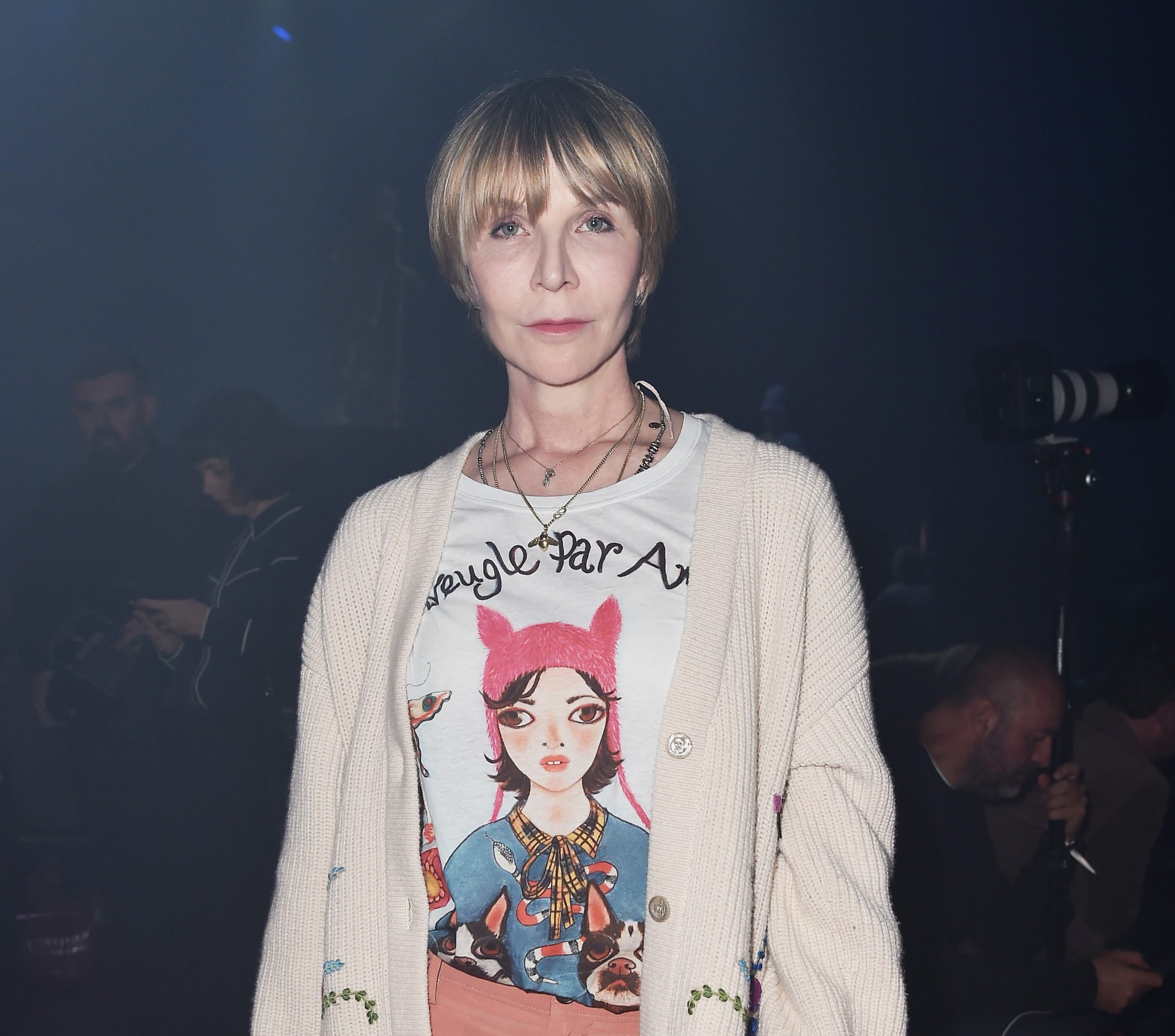
With their mournful oversize eyes and vacant expressions, the waifishly spectral subjects that haunt artist Helen Downie’s paintings are eerie yet glamorous figures—much like the aloof, imposing models that often star in runway shows and the pages of glossy fashion magazines. At the same time, Downie, who makes art under the disarming moniker Unskilled Worker, operates in a sensitive register not typically associated with the global fashion industry at large, where glamor and sex are used to sell, not artistic quirk. But it’s exactly that aesthetic that charmed Gucci creative director Alessandro Michele so thoroughly that he decided to create his latest capsule collection with the mysterious artist.
For Downie, her work is all about innocence. “I think I’m always trying to get back to my childhood, to get back to the wonder I felt as a 7-year-old, and to take people with me,” she told artnet News. “I want to feel the way I did as a child looking at my first book. The characters change; sometimes they’re the girls at school who weren’t considered pretty, the ones left out. They almost paint themselves.” She added, “I hope to make work that’s transportive.”
In a way, it’s fitting that Michele was attracted to Downie’s outsider energy. As many know, he seemed to appear magically in January of 2015, when he was promoted from accessory designer to the top creative position at the acclaimed brand, arriving like a tempest with a bushy beard and flowing Renaissance locks. He has since replaced the brand’s slick sexuality with a maximalist streak rich with literary, artistic, and philosophical allusions. Michele’s layered, chaotic, and gilded madness was an instant hit, setting a visual benchmark that helps define today’s overall aesthetic.
Unskilled Worker’s The Pelican’s Tale. Courtesy of Gucci.
His renegade spirit, meanwhile, has paid off well for Kering, the conglomerate that owns Gucci. Just this month the brand reported sales growth of 49 percent in the third fiscal quarter of this year, after sales increases of 48 percent and 39 percent in the first and second quarters, respectively.
Downie’s journey to Gucci was unique as well. She was first discovered through her Instagram account by Nick Knight of the pioneering fashion website SHOWSTUDIO. “I had no expectation at all when I began to post my work—I didn’t really consider what might happen,” she said. “I just wanted to paint, and Instagram was a way for me to see my work outside of my studio.” She began to do some work for Knight, using her painterly talents to amplify images from the recent runway shows—including one for Gucci.
That image was purchased by the brand and then presented to Michele as a gift, which led to a conversation and, then, collaborations, like her inclusion in an exhibition curated by Gucci at Shanghai’s Minsheng Art Museum. “Since then I’ve been fortunate to have a seat at all of his shows,” she says. Her work with the fashion label, meanwhile, now hangs on walls in cities such as Milan, Shanghai, New York, London, and Paris.
The Arrival. Courtesy of Gucci.
The collection itself, of course, is the most robust and immersive manifestation of their artistic dialogue. Downie’s images have been placed on everything from grosgrain bows and silk dresses to printed sneakers and ladylike handbags. Bespectacled women and bearded, tattooed men gaze out, looking wistfully into the distance while styled in the eccentric vestments that are so obviously Gucci. “I think of Alessandro as a hip-hop artist sampling from a visual map that spreads 1,000 years,” she says. “I love that idea, to make something recognizable but to change the intention. My work is similar—little secrets are threaded through the work, things held dear since childhood. It’s intensely personal.”
There are other harmonies between their two sensibilities, she adds. “Alessandro’s work has always triggered memories for me,” she says. “It gives me the same feeling as when I used to scour record covers for secret messages and meanings. It’s quite magical.”
Downie’s urge to explore this shared aesthetic ground drove her work in the studio when she was creating the collaboration. “The Gucci paintings are made spontaneously, like a creative conversation in which I try to pick up on Alessandro’s references while adding my own thoughts to the characters and their experiences,” she explains. “I think we all like to construct these imaginary worlds in which we use a different language to define the times in which we live and to challenge the traditional ideas and approaches. It’s been so exciting to discover his world and then mix it in with mine. Sometimes it can be a single detail—a name embroidered onto a pocket or the shape of a hat and this can trigger a memory. And so, a story begins to form.”
With Love. Courtesy of Gucci.
The Unskilled Worker partnership is only the latest of the unconventional artistic collaborations that Michele has embraced. He has partnered with the graffiti artist Trevor Andrew, known as GucciGhost, taking back the street artist’s appropriation of the brand’s label for a capsule collection—a savvy meta-appropriation perfectly in line with these times of digital copycatmanship. (Michele is not only a gifted designer, he’s a brilliant marketer.) Then there was the collaboration with the artist Coco Capitan, which took classic Gucci iconography and “defaced” it with pseudo-philosophical inscriptions reminiscent of street art.
As for the role Instagram played in rocketing Downie to the center of the fashion conversation, it helps that that her work—somewhere between historical painted portraits and Edward Gorey illustrations—is perfectly primed for social media. She is fully aware of the power she harnessed, and its application for other artists, too. “Instagram and other social media platforms have enabled artists and collectors to connect outside of the gallery system,” Downie says. “It has made art more inclusive for many people, which can only be a good thing.”